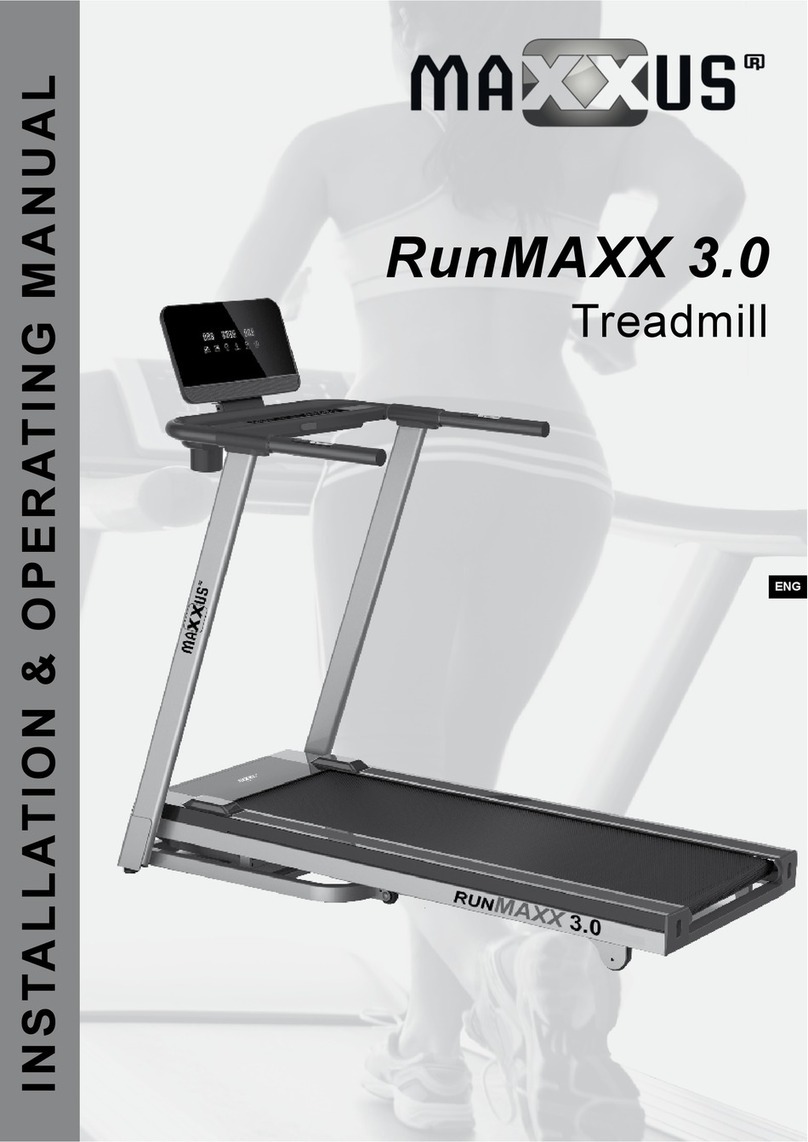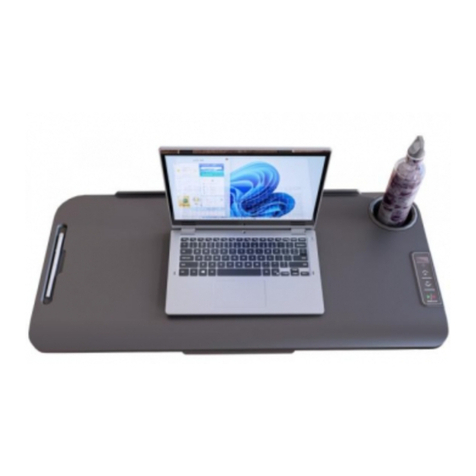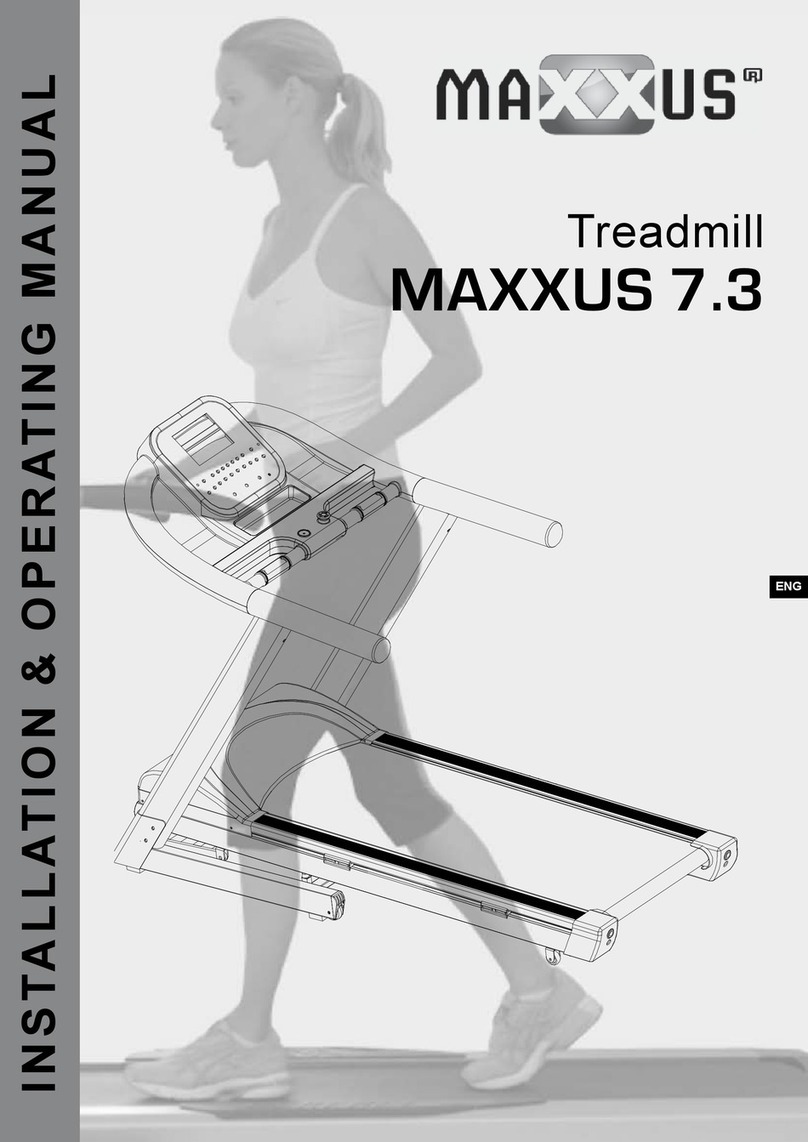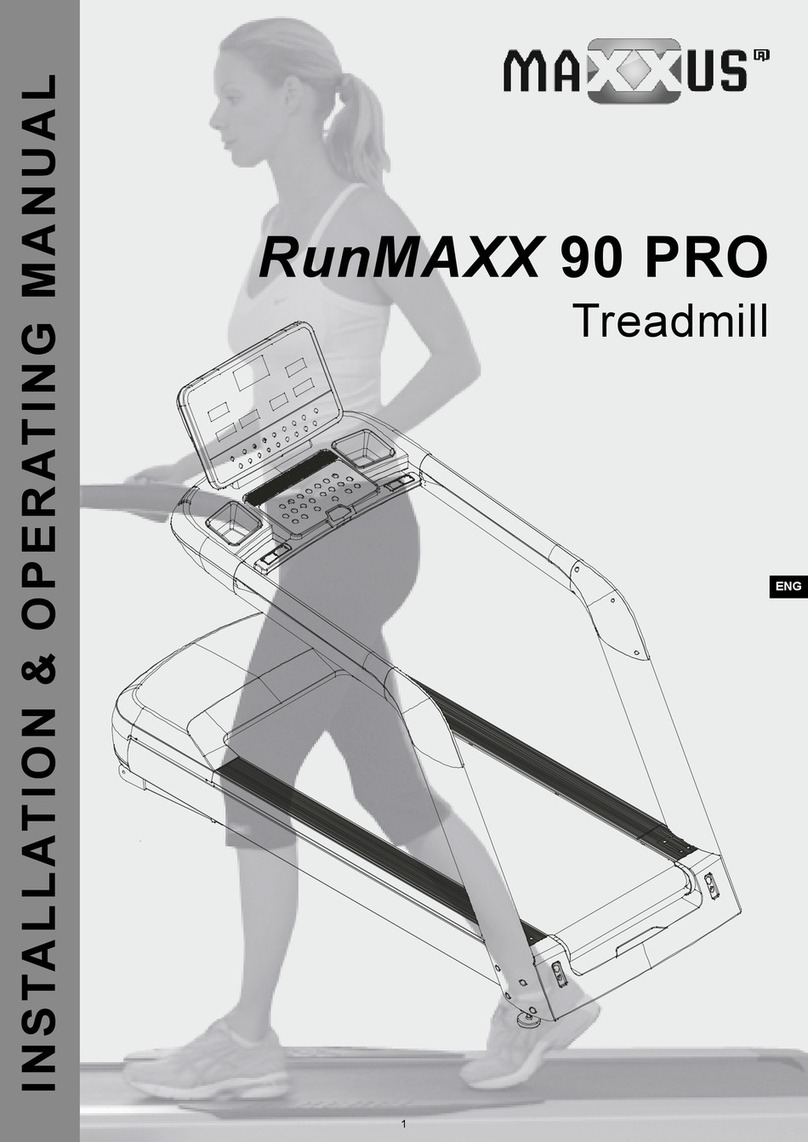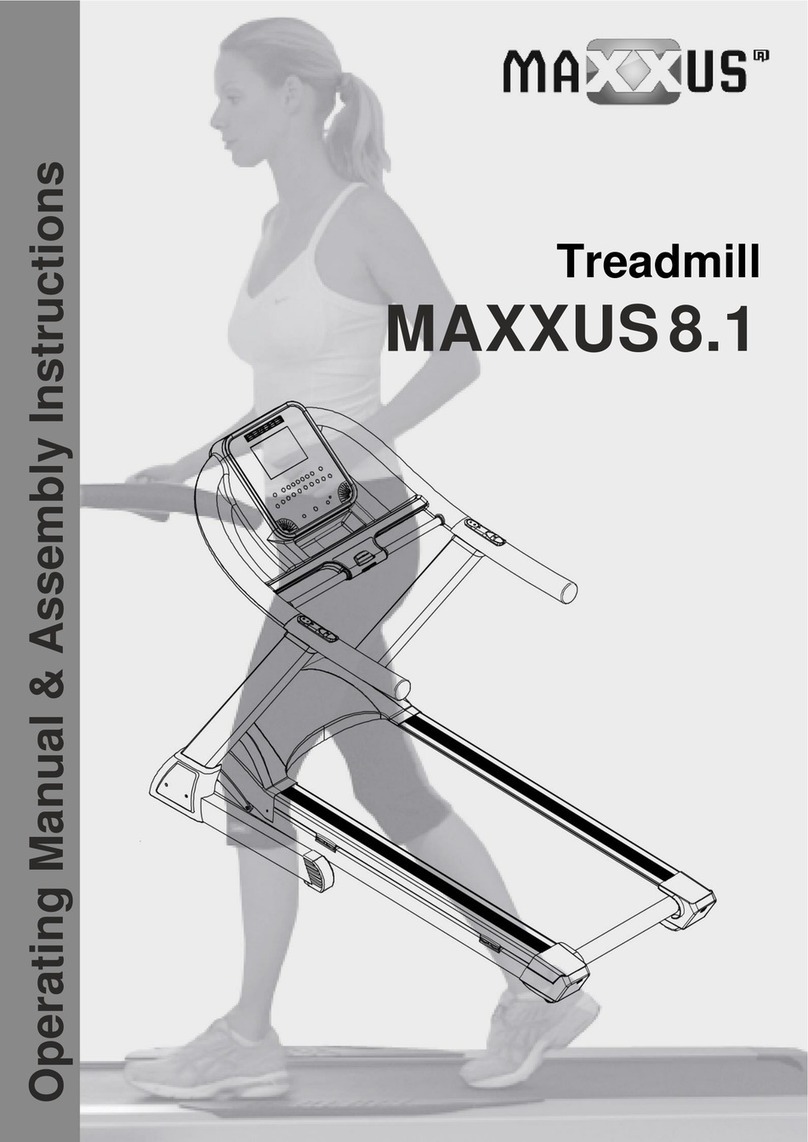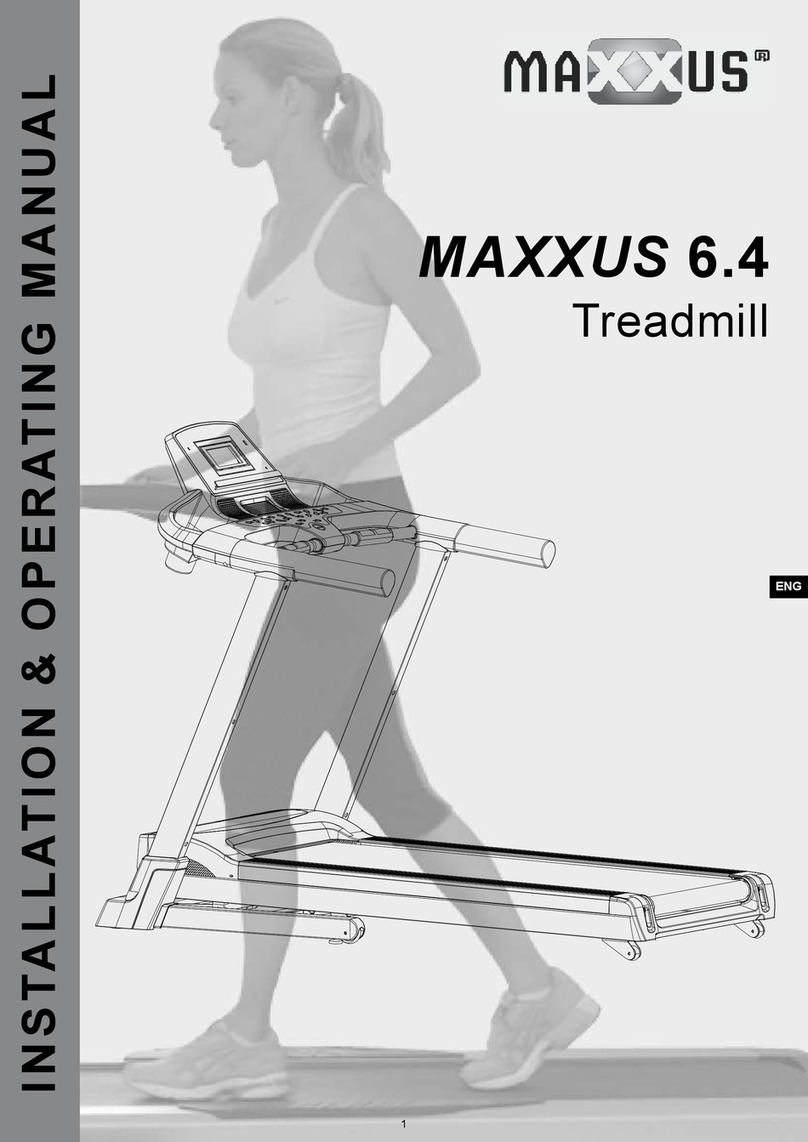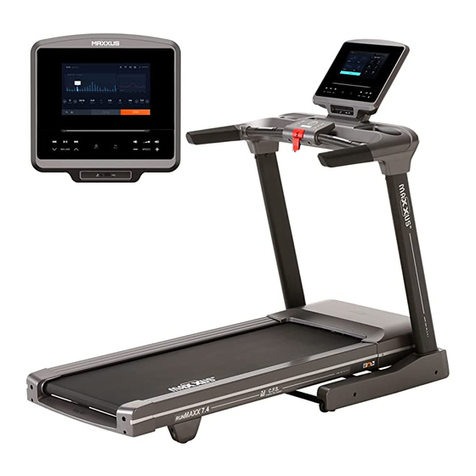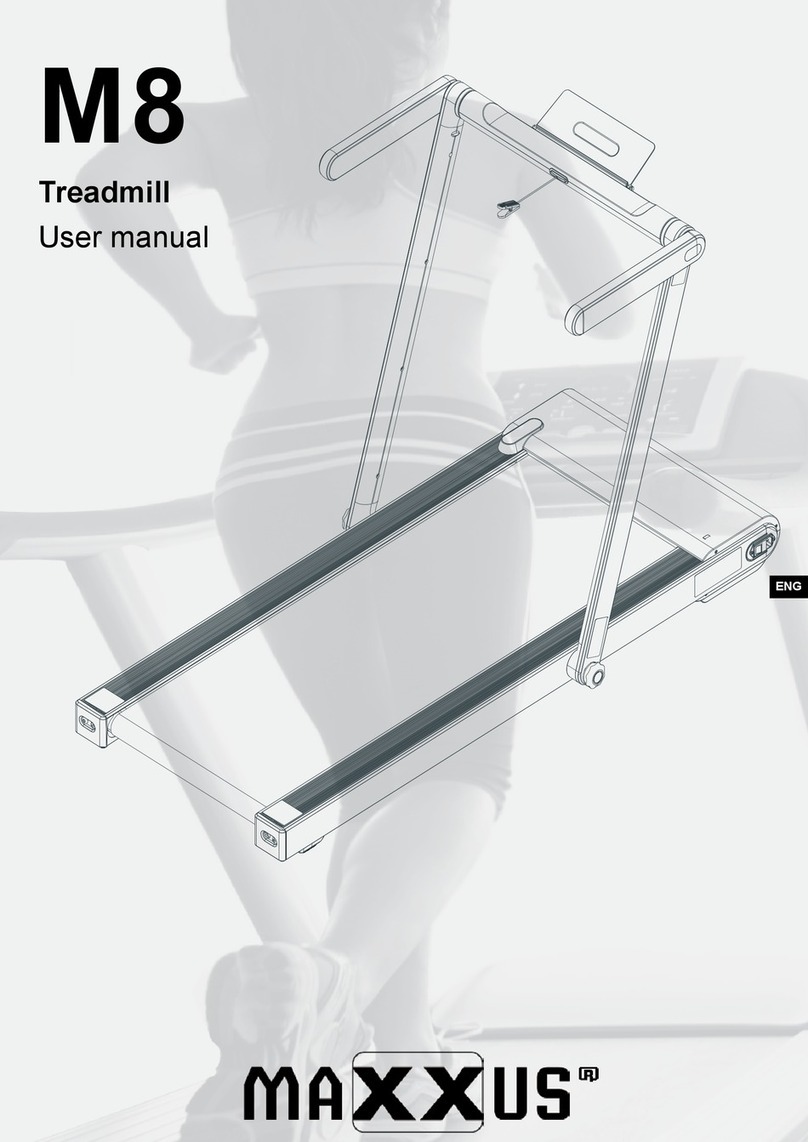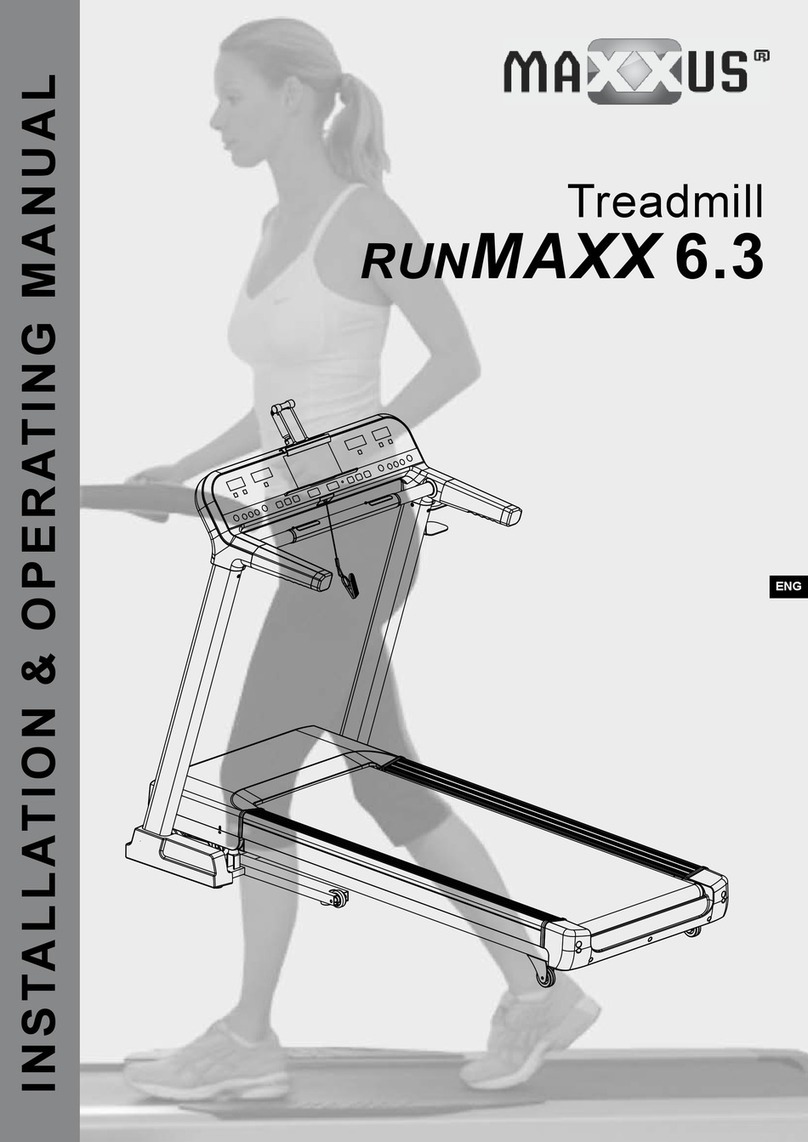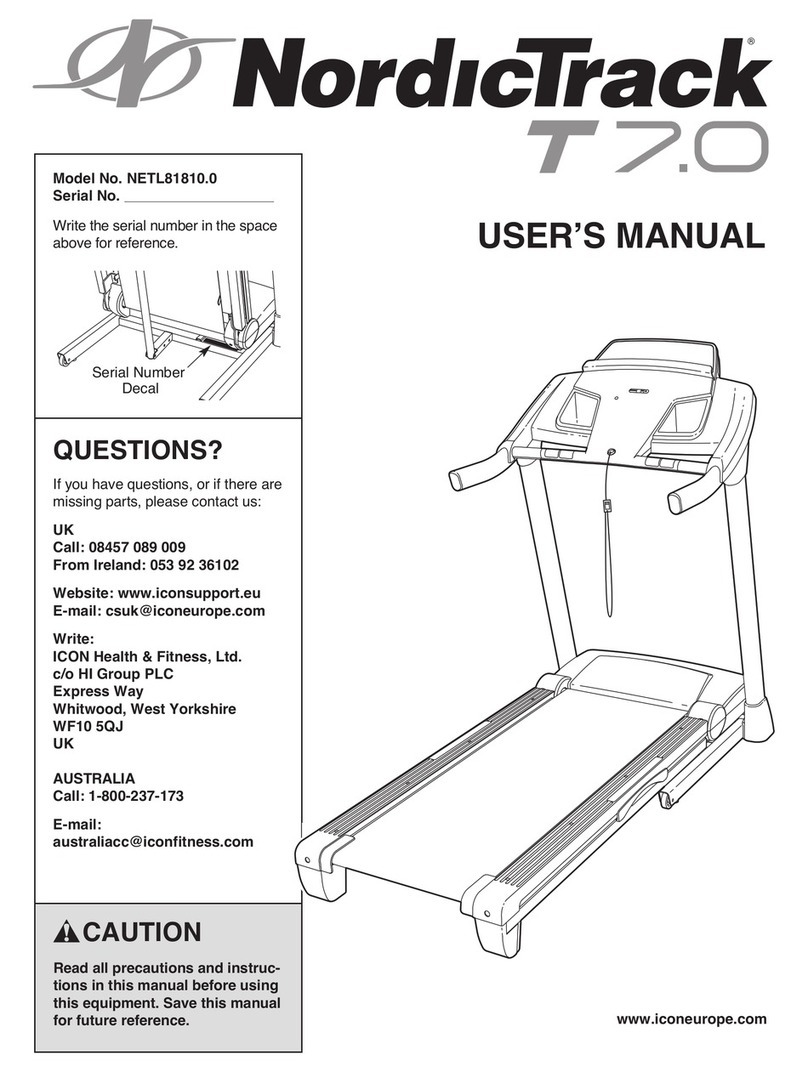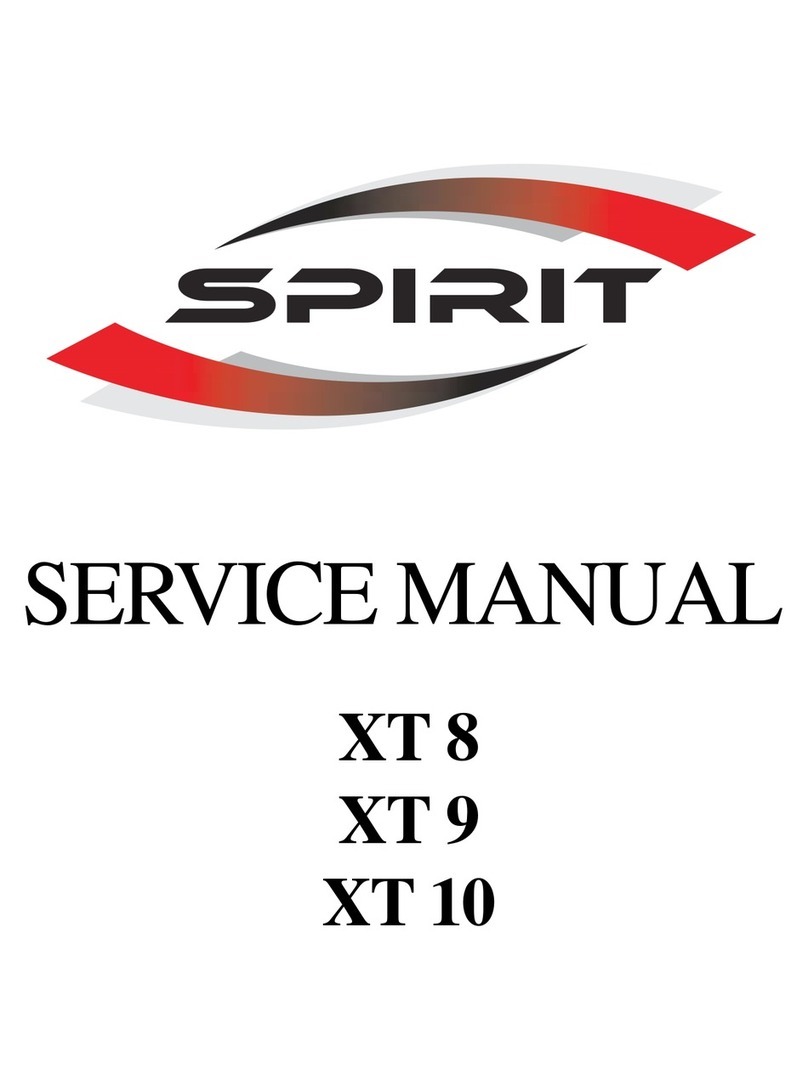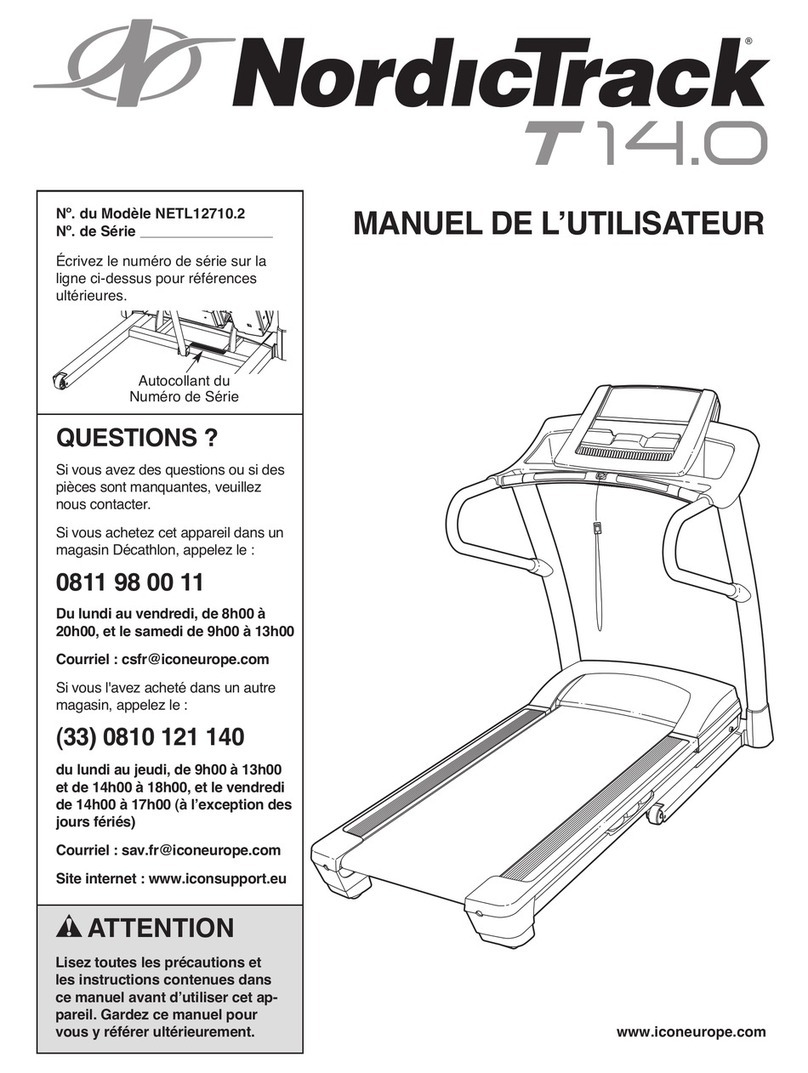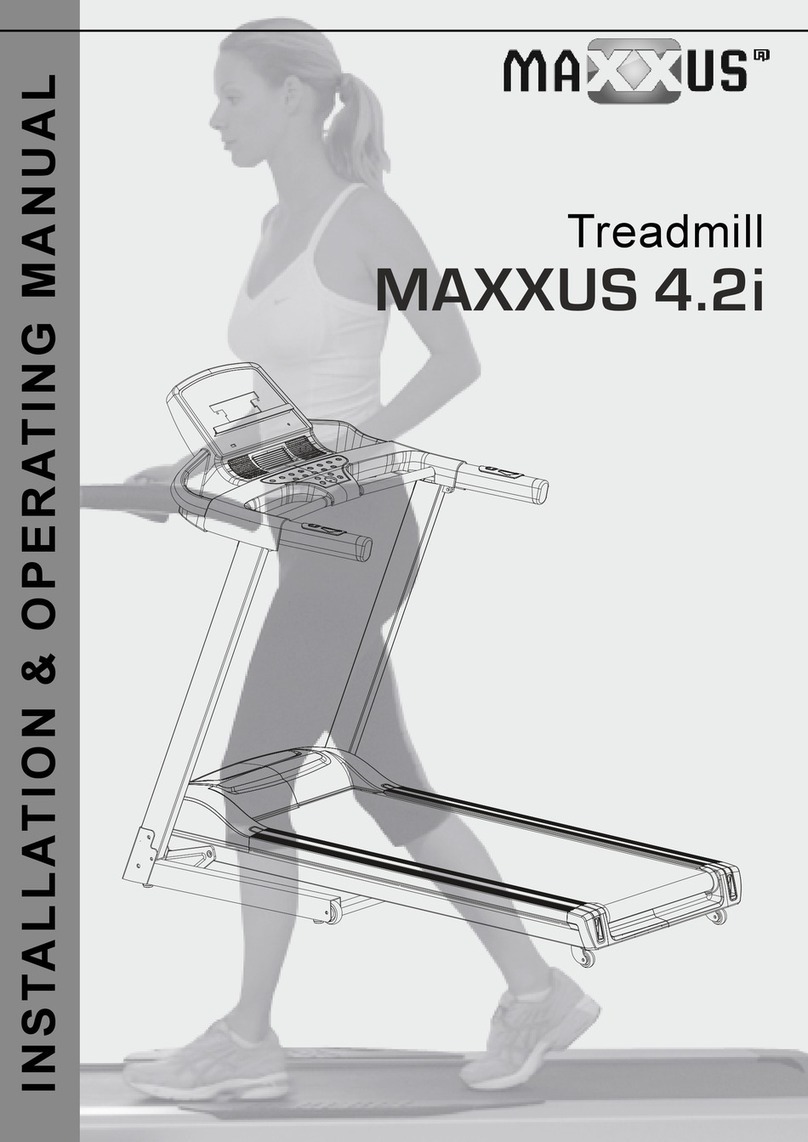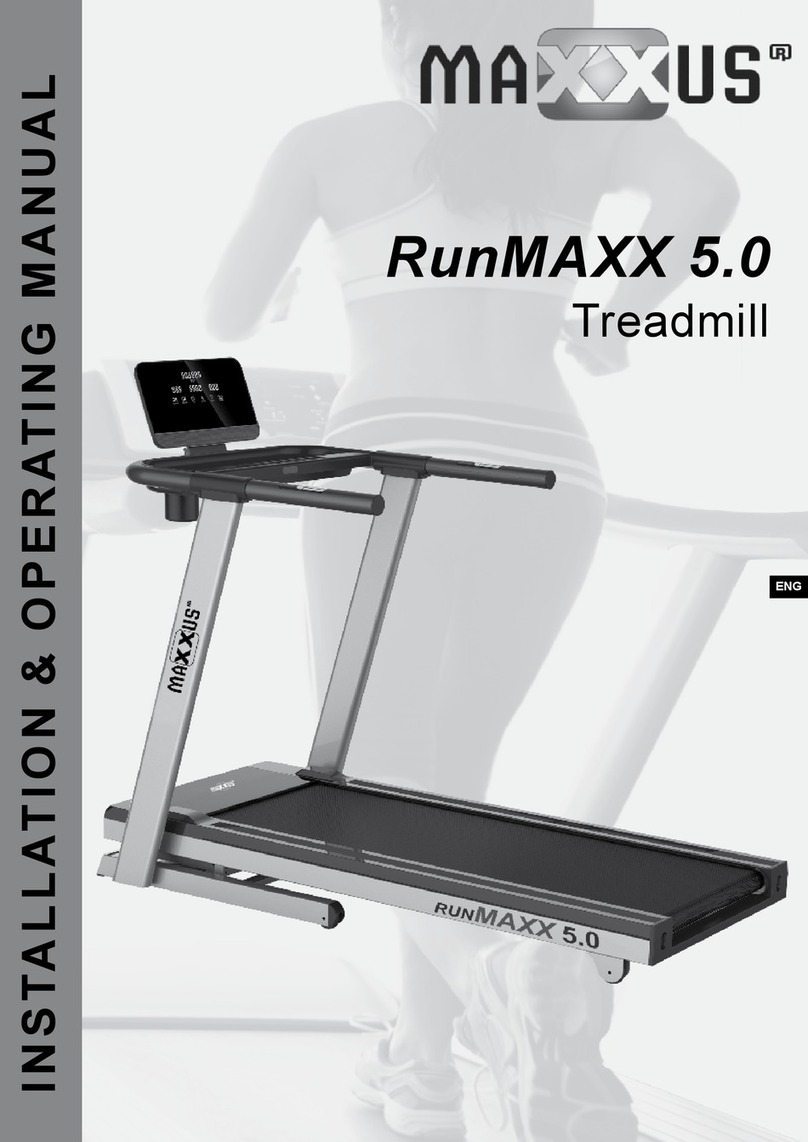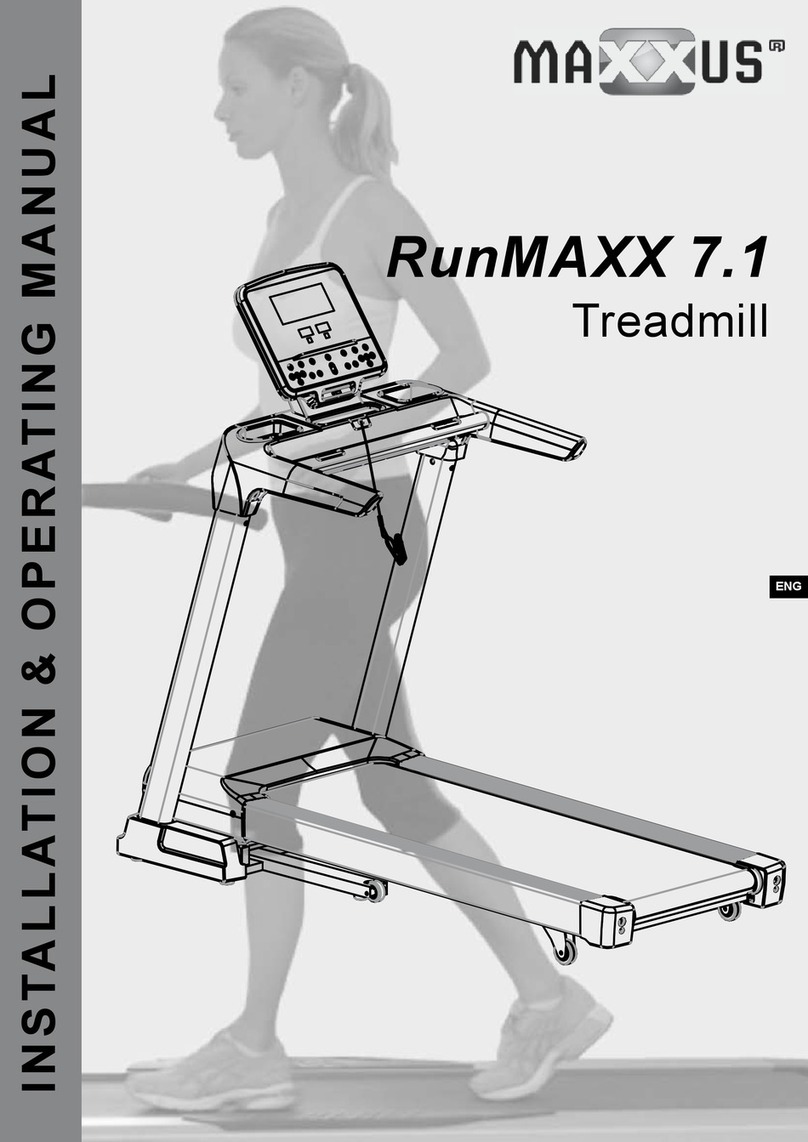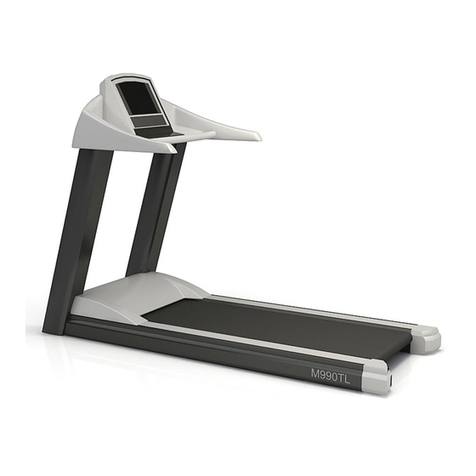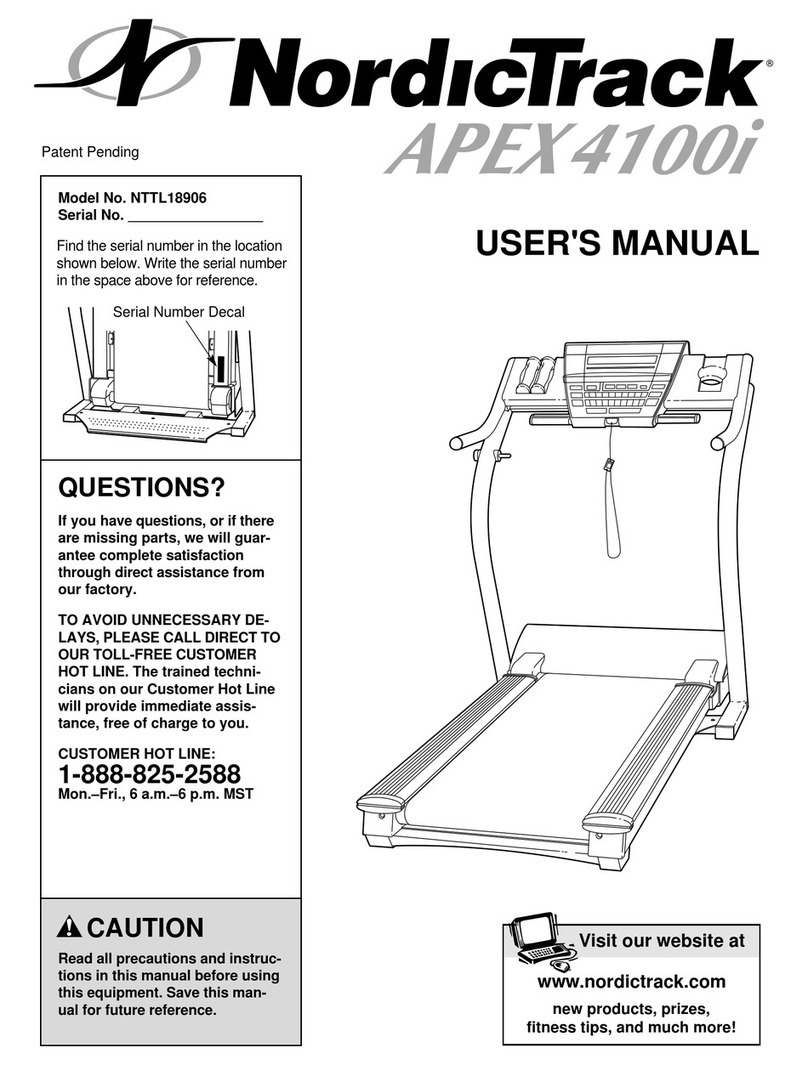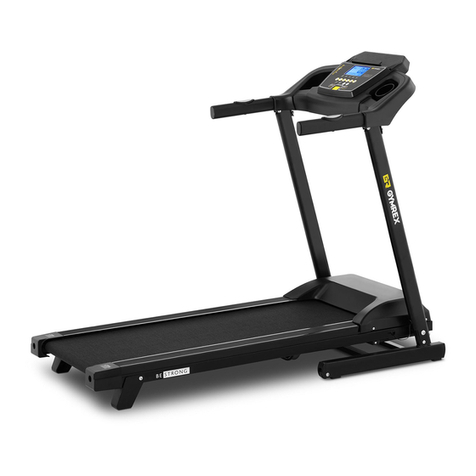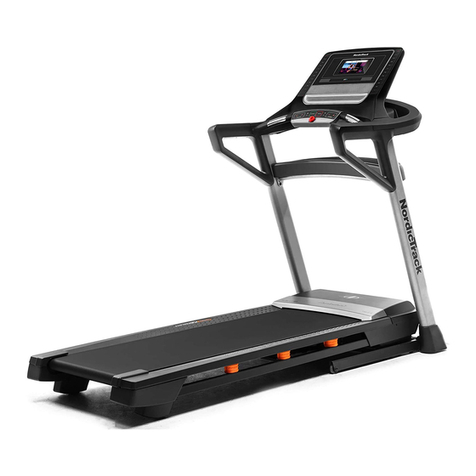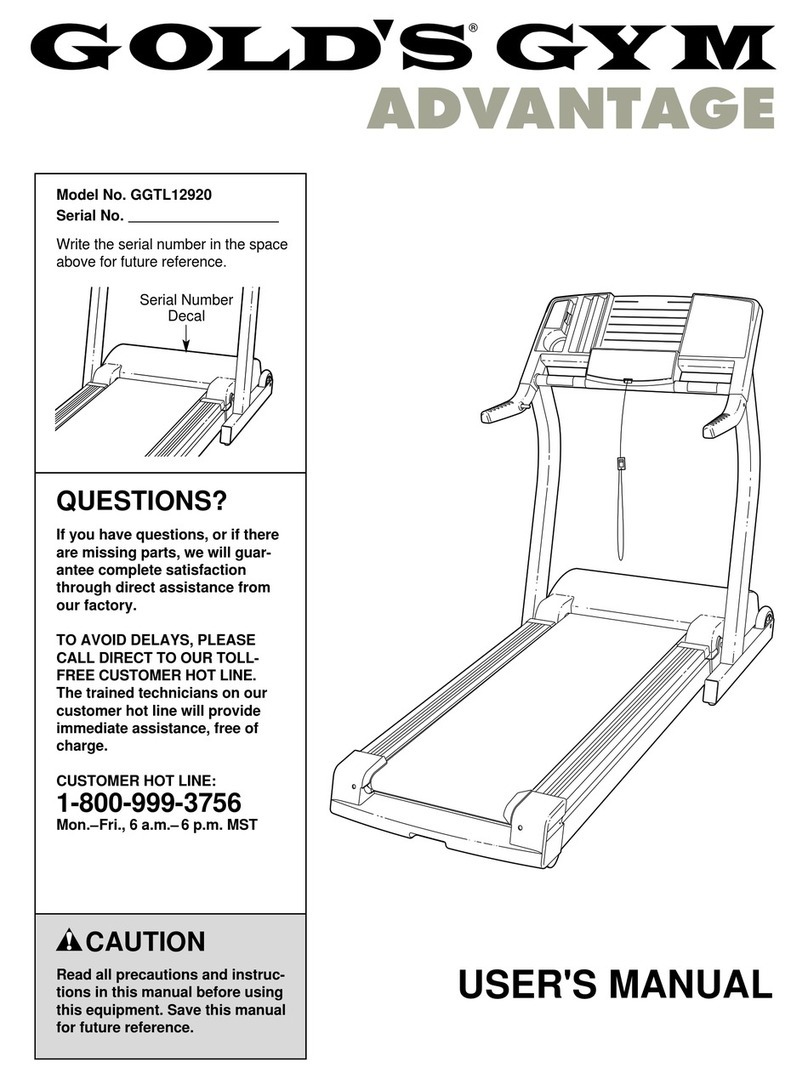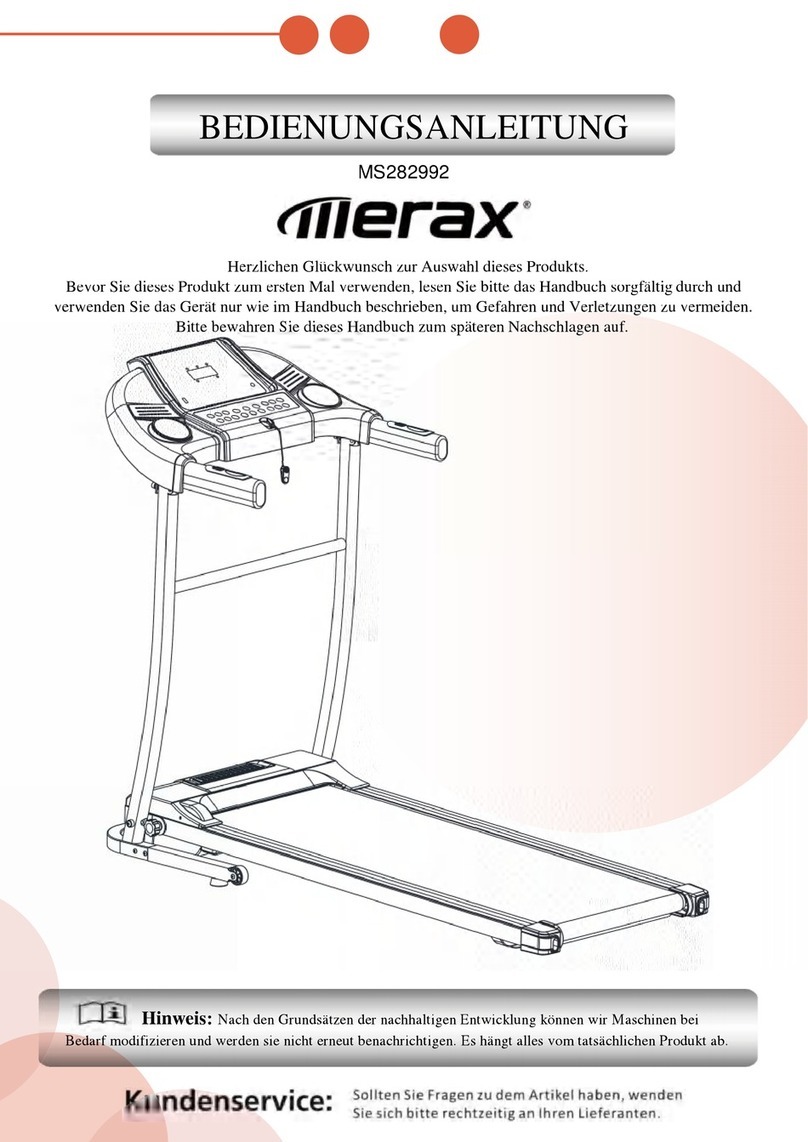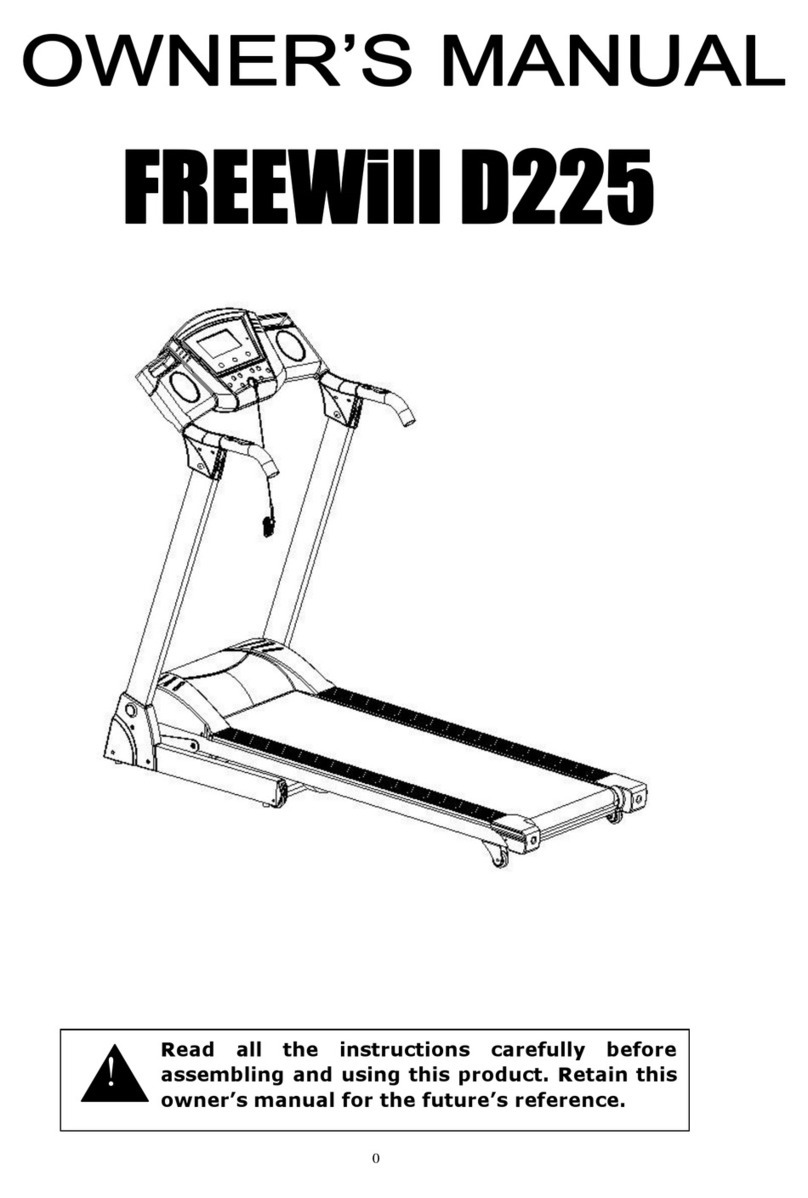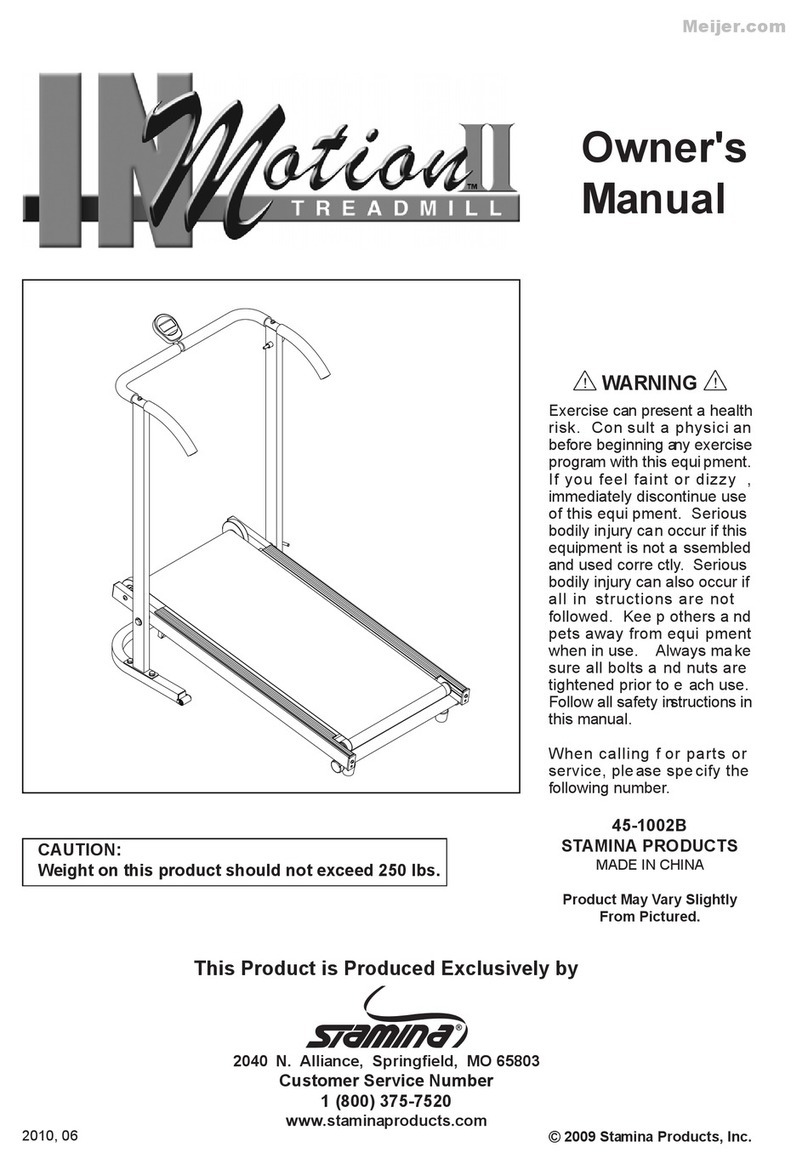
3
ENG
Before you start exercising, be sure to read the entire user guide, especially the safety information, the maintenance & cleaning infor-
mation and the training information. Take care too that everyone who uses this training device is also familiar with this information and
observes it.
Be sure to carefully follow the maintenance and safety instructions in this manual.
This training device may only be used for its specic purpose. Improper use may present a risk of accidents, damage to health or dam-
age to the exercise device. No liability whatsoever is accepted by the distributor for injury or damage caused by improper use.
Power connection
−A mains voltage of 220-230V is required for the operation of the device.
−The exerciser may only be connected to a professionally installed, earthed, 16 A, fused single socket with the mains cable sup-
plied.
− The training device is switched on and o only using the ON / OFF switch.
−Always disconnect the power plug from the power outlet when moving the exerciser.
−Before carrying out any cleaning, maintenance or other work, always disconnect the mains plug from the socket.
−When connecting the mains plug, do not use socket strips or cable reels.
−If an extension cable is required, then it must comply with DIN standards, VDE regulations and guidelines, technical rules issued
by other European Union member states or other states which are party to the Agreement on the European Economic Area.
−Always lay the power cord in such a way that it can neither be damaged nor is a tripping hazard.
−In operating or standby mode, electrical devices such as mobile phones, PCs, Televisions (LCD, plasma, tube, etc.), game con-
soles etc. will emit electro-magnetic radiation. For this reason, all these types of devices should be kept away from your training
device as they could lead to malfunction, disturbances or false outputs being shown in heart rate measurements.
−For safety reasons, always remove the electrical plug from the socket when the device is not in use.
Training environment
− Choose a location that oers the greatest possible rm space on all sides of the exerciser. The safety area behind the training
device should be at least 200 cm long and 100 cm wide. Allow at least 100 cm to each side of the training device and 100 cm in
front of the training device.
−Ensure good ventilation and that optimal oxygen is available during exercise.Avoid draughts.
−Your exercise equipment is not suitable for outdoor use, so storage and training is only possible in temperate, clean dry rooms.
−The temperature range to operate or store this device is between a minimum of 10° and maximum of 30°
−Do not operate or store your training device in wet areas, such as swimming pools, saunas, etc.
−Make sure that your exercise equipment is always mounted on a level clean surface is. Unevenness in the ground must be re-
moved or compensated.
− To protect delicate oors, such as wood, lamina, tiles, etc. and from damage such as scratches, it is recommended to put a oor
protection (carpet piece, mat, etc.) permanently under the device. Make sure that the pad is secured against slipping.
−Do not place the exerciser on pale or white carpets, as the feet of the appliance may cause marks.
−Make sure that your exercise equipment, including the power cord, does not come into contact with hot objects and there is a
sucient safety distance from any heat source, such as radiators, stoves, open replaces, etc.
Personal safety instructions for training
−The safety key must be correctly inserted before each training session.
−While the exerciser is not in use, remove the safety key and mains cable to prevent improper or unsupervised use by third parties,
such as children.
− You should make a health check with your doctor before your rst workout.
−If you feel any physical discomfort or experience breathing problems, stop training immediately.- Always start your workouts with
a light load and increase it during the course of your workout evenly and gently. Reduce the load towards the end of your training
session.
−Be sure to wear suitable sportswear and sports shoes during exercise. Note that loose clothing can get caught in the running belt
or rollers during exercise.
−Your exercise equipment can only be used by one person at a time.
−Check whether your device is in perfect condition before every training session. Never use your exerciser if it has any faults or
defects.
−Independent repair work can only be done after agreement and approval from our service department has been received. Only
original spare parts may be used.
−Your exercise equipment must be cleaned after each use. In particular, remove all residues caused by body perspiration or other
liquids.
−Always make sure that liquids (drinks, body sweats, etc.) never enter the vibrating plate or penetrate the cockpit, as this leads to
corrosion and damage to the mechanical and electronic components.
−Your exercise equipment is not suitable for use by children.
− During training, third parties - especially children and animals - must have a sucient safety zone.
−Before any training, check whether there are objects under your training device and remove them. Never exercise with your exer-
ciser when there are objects underneath.
−Always make sure that your exerciser is not misused by children as a toy or climbing equipment.
−Make sure that you and third parties never bring body parts close to moving mechanisms.
The construction of this training device is based on the latest technical and safety standards.
This training device should only be used by adults!
Wrong and / or unplanned training can lead to extreme health problems!
Safety Instructions
